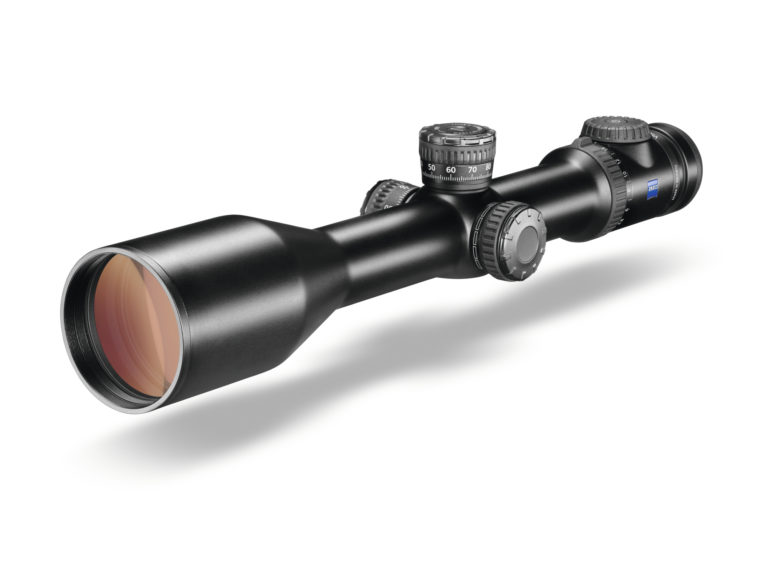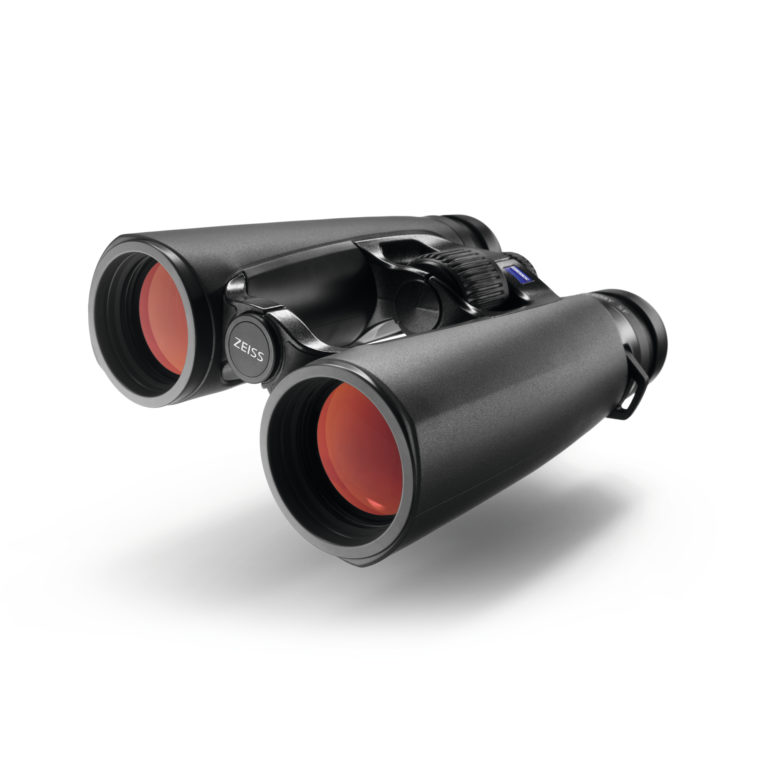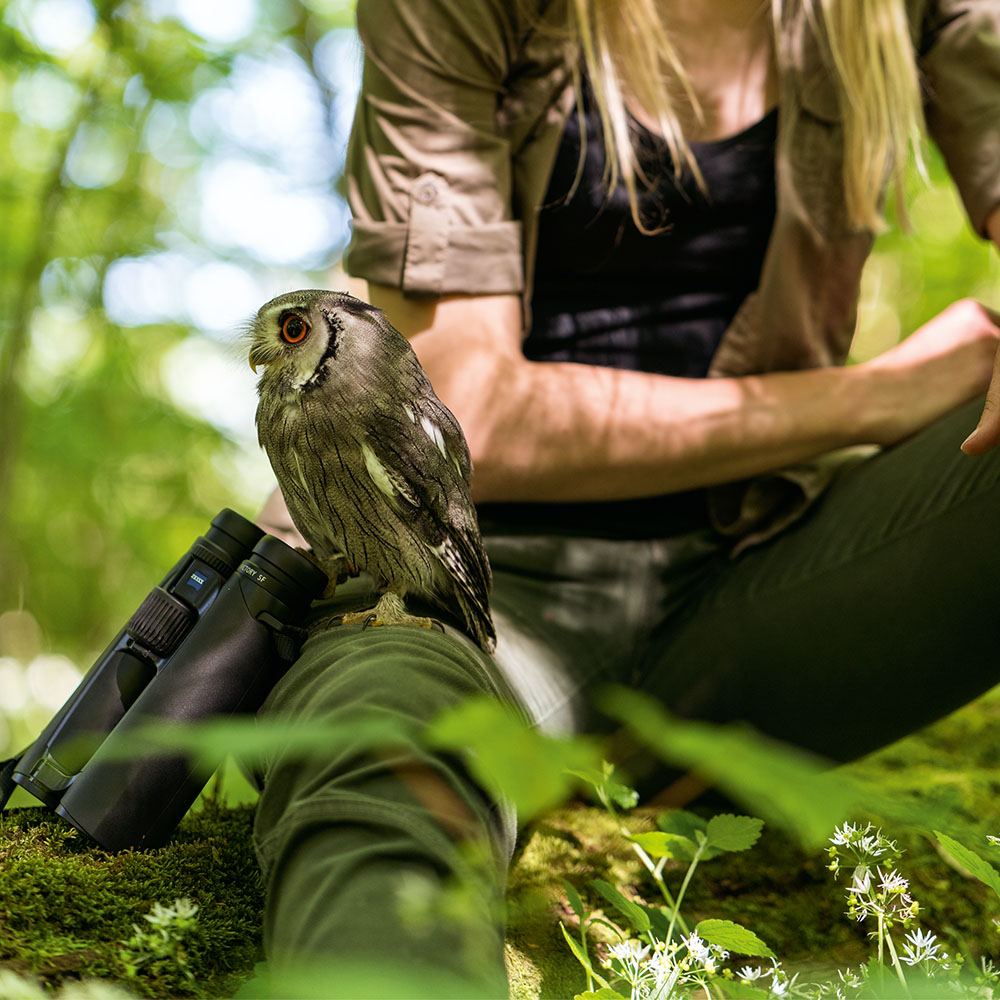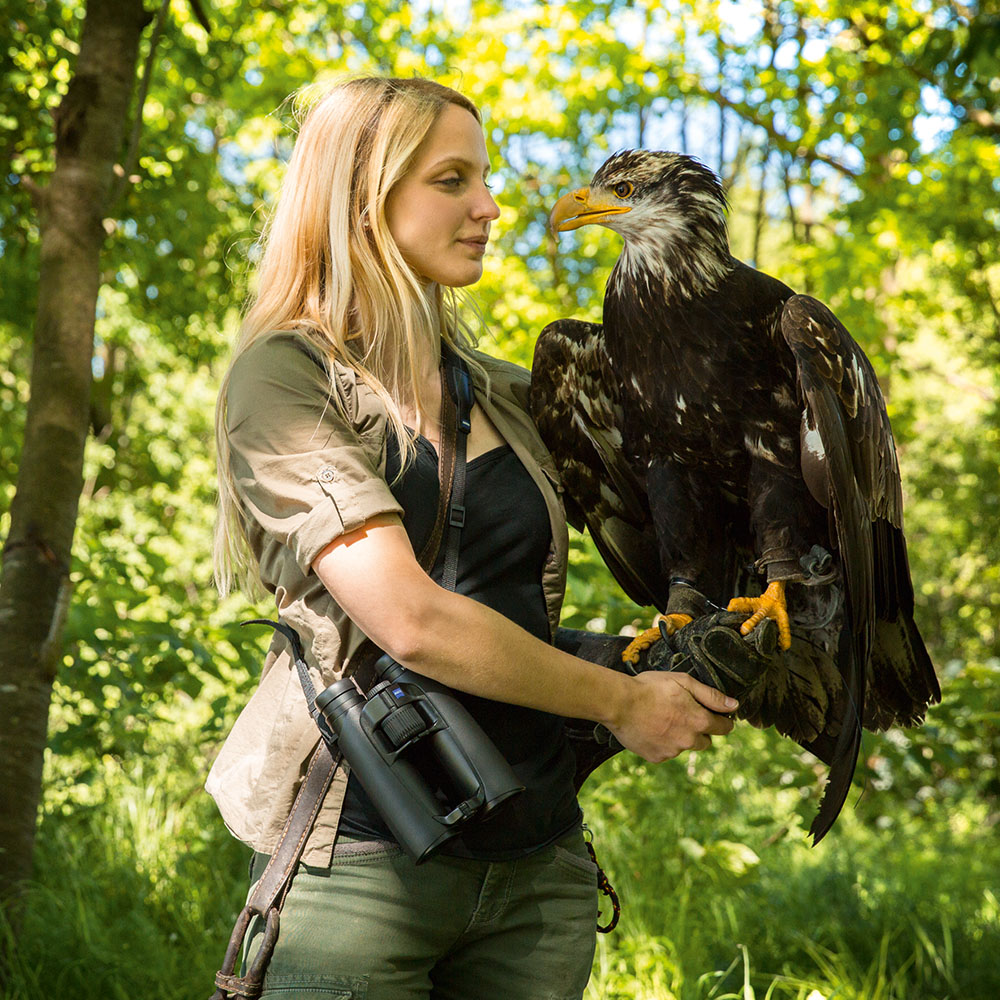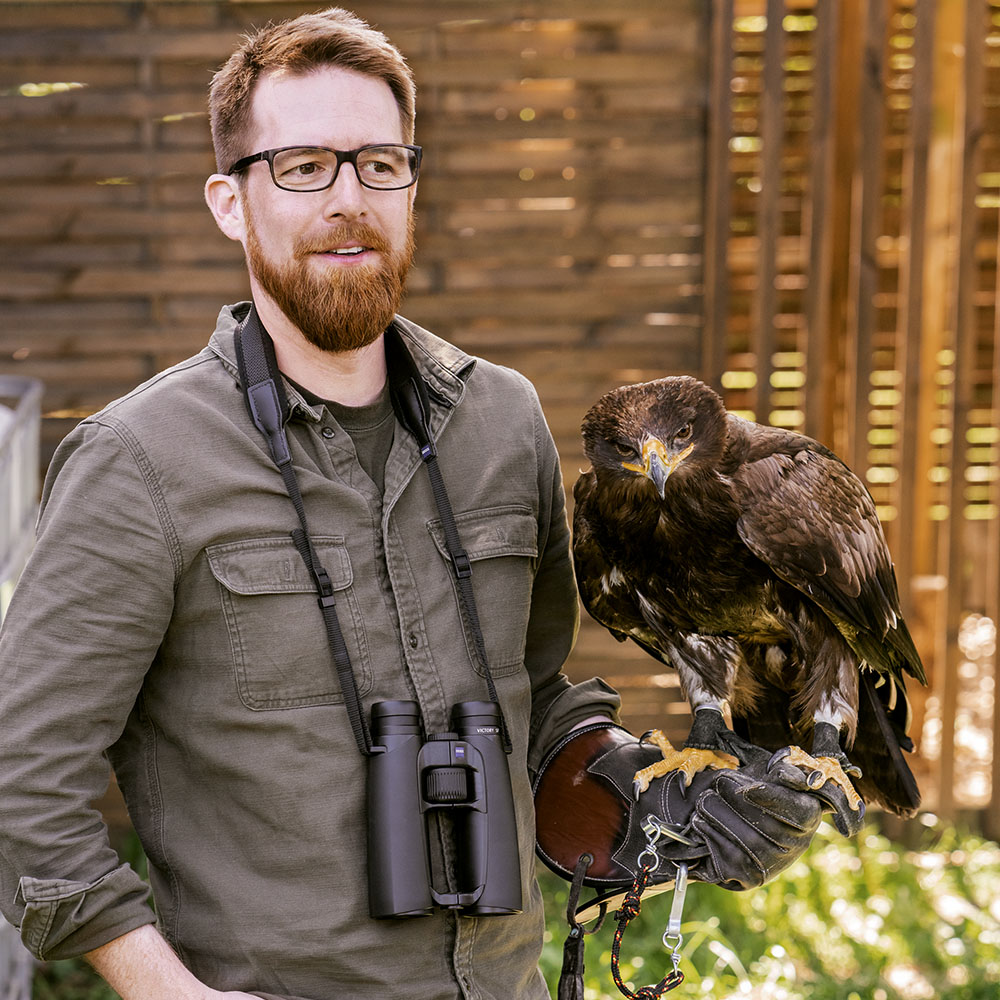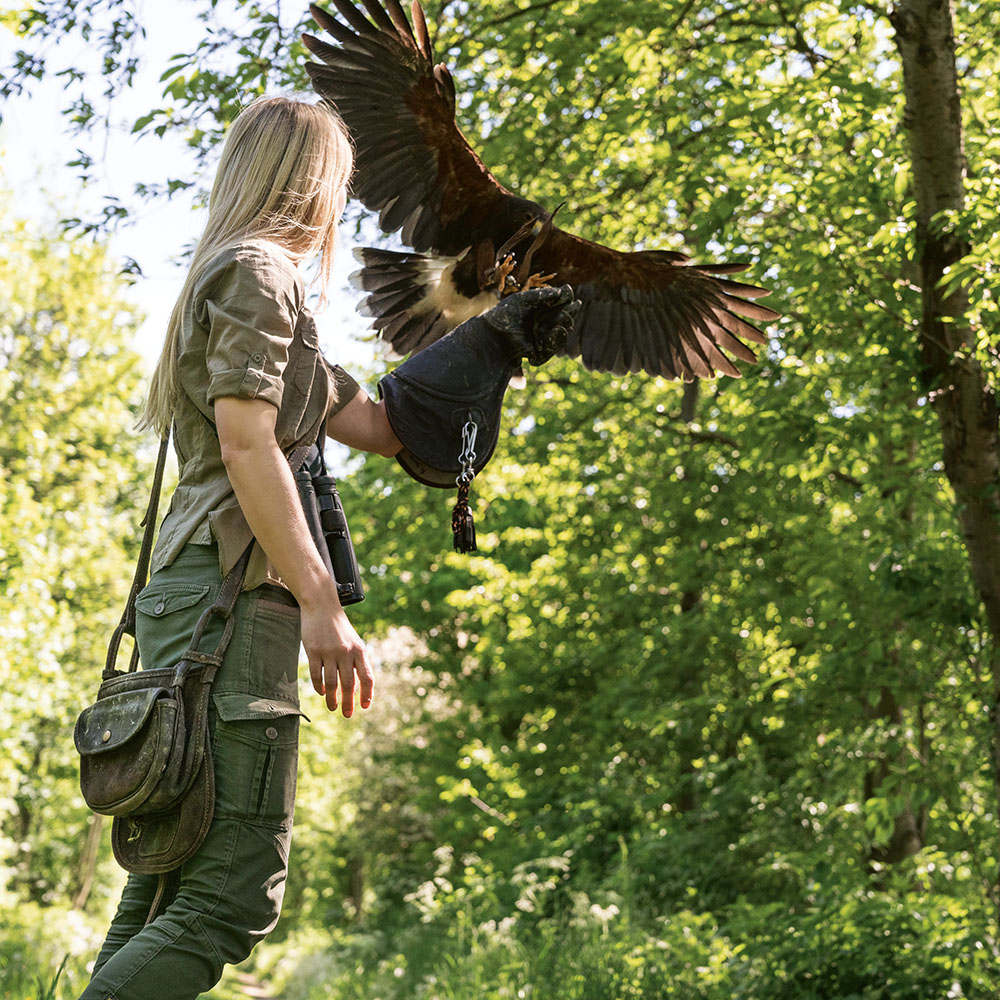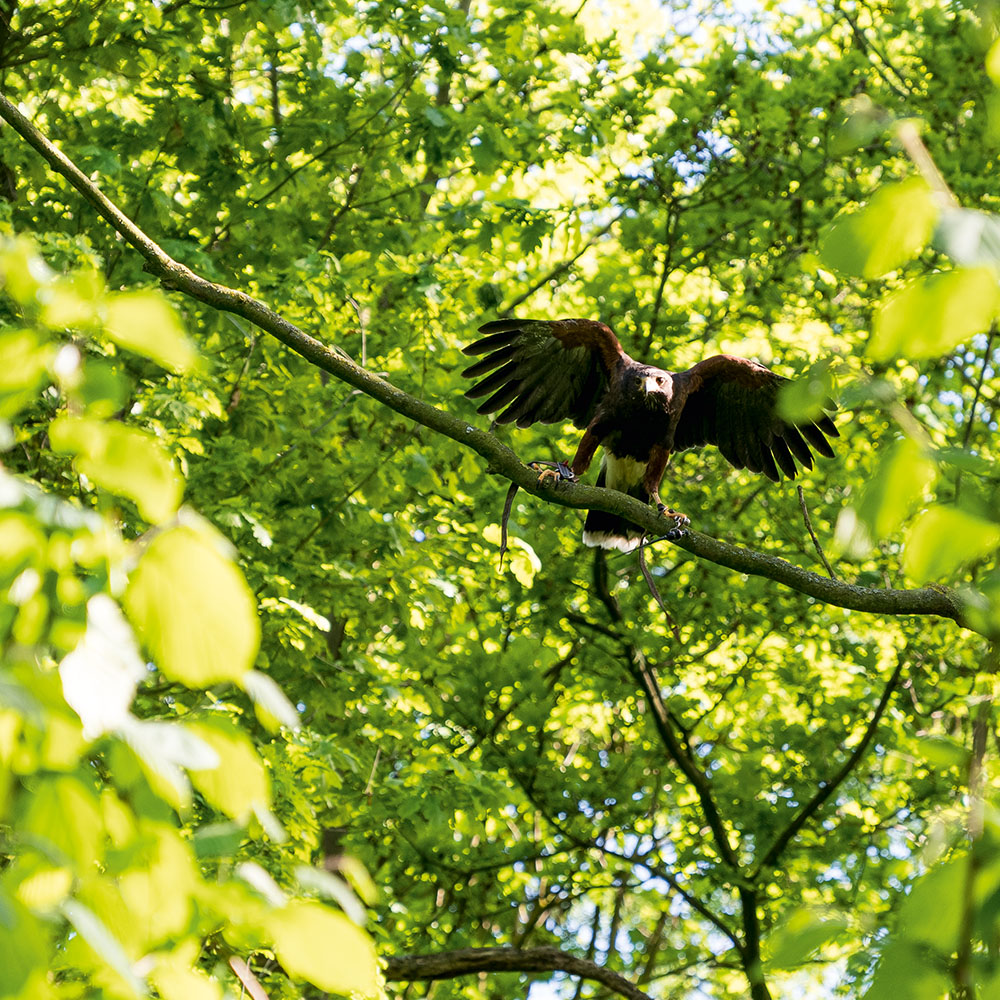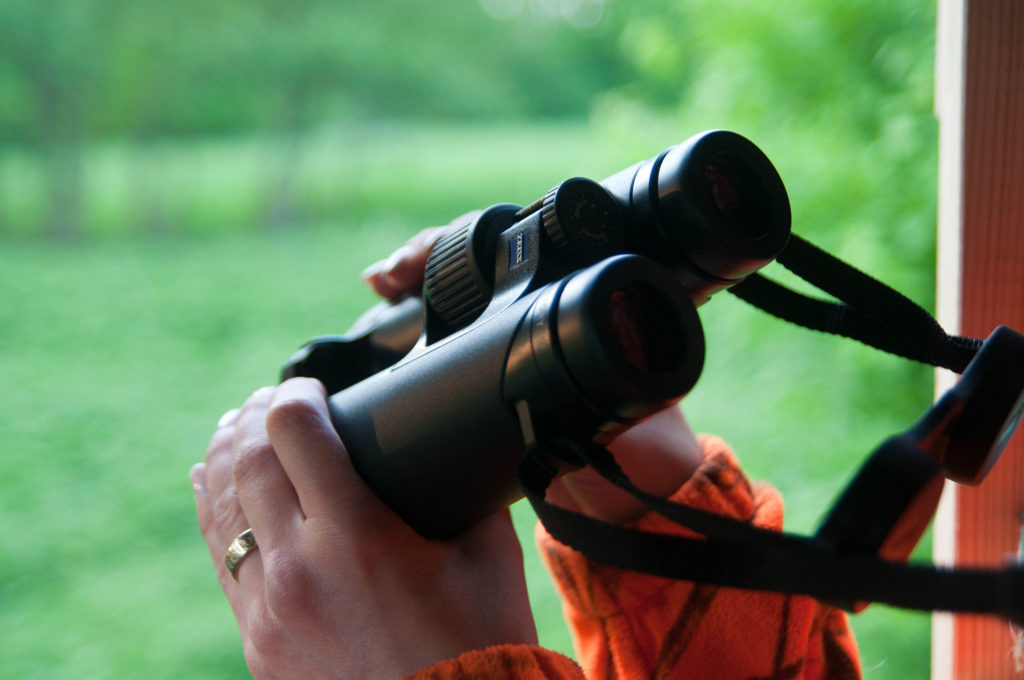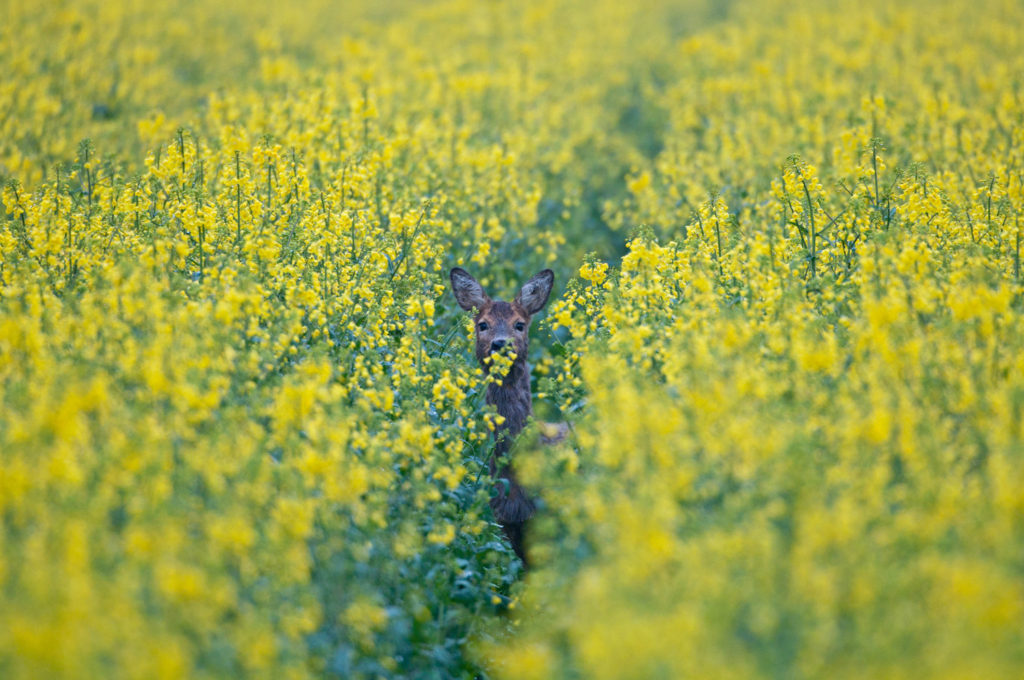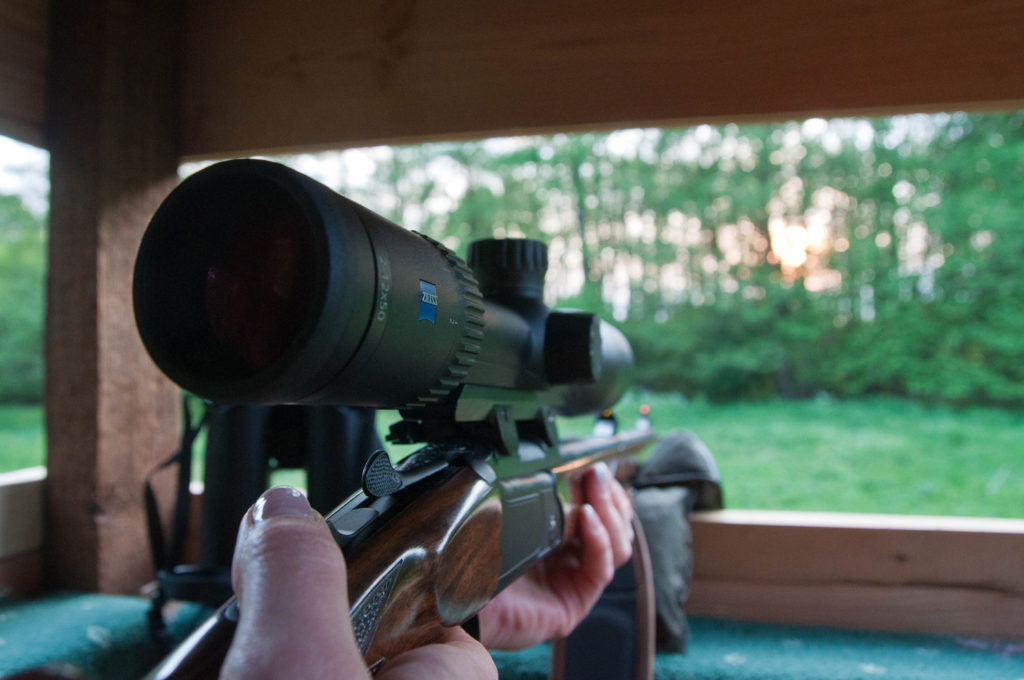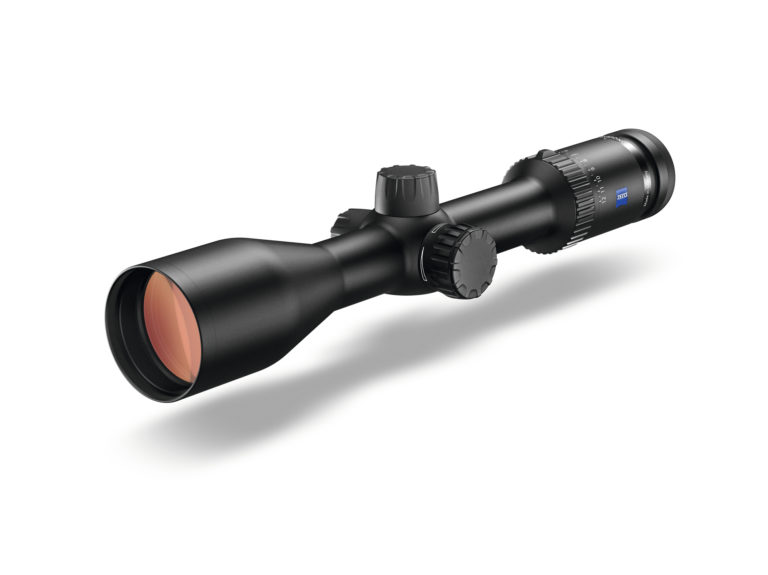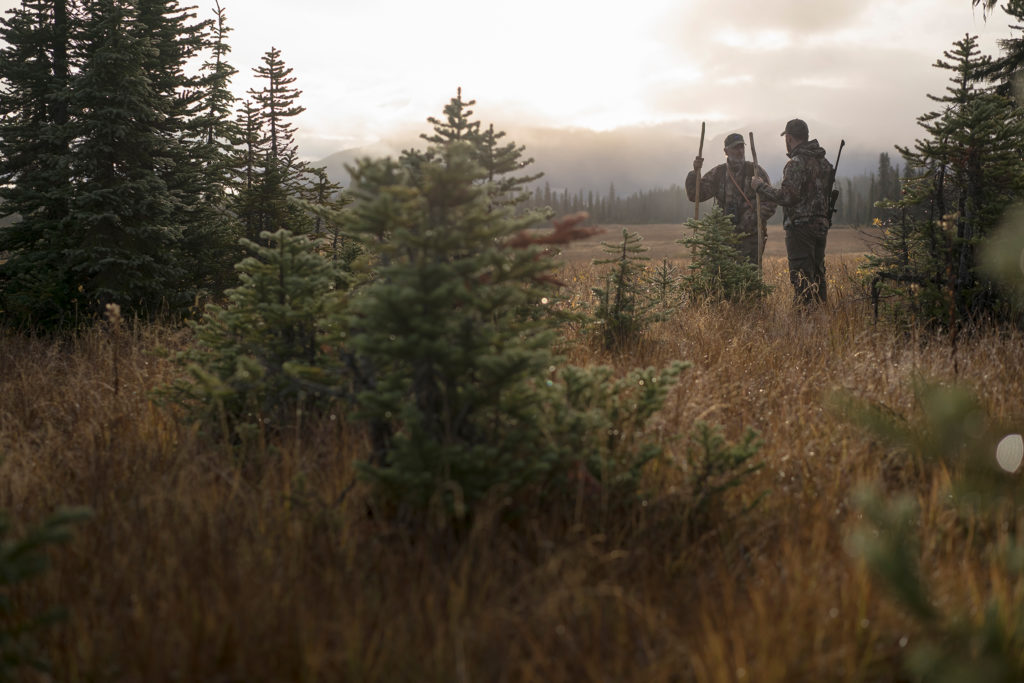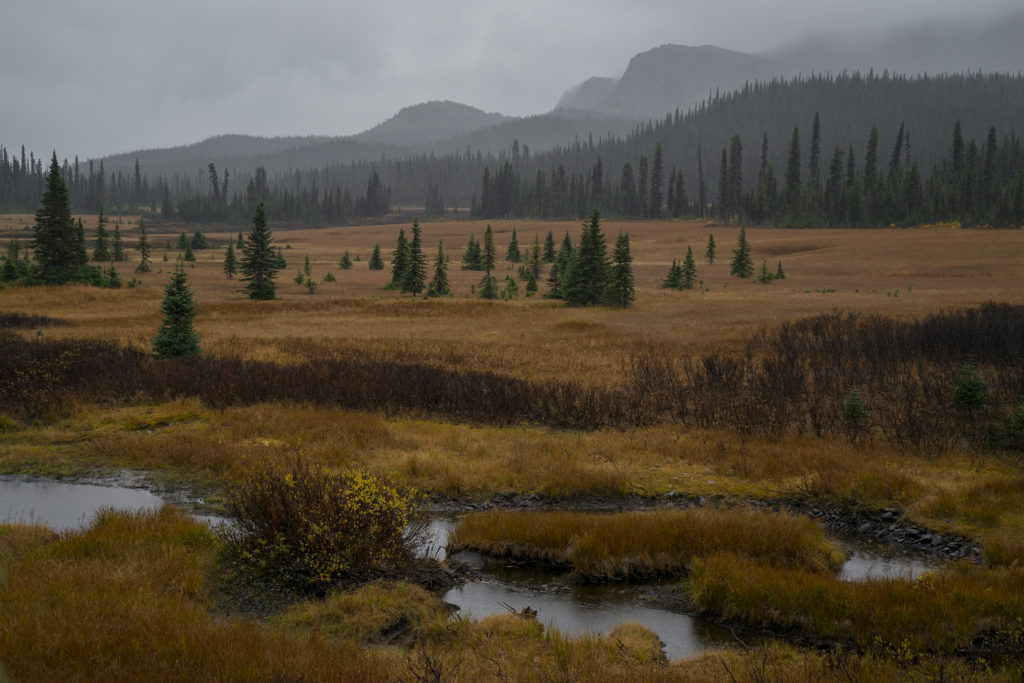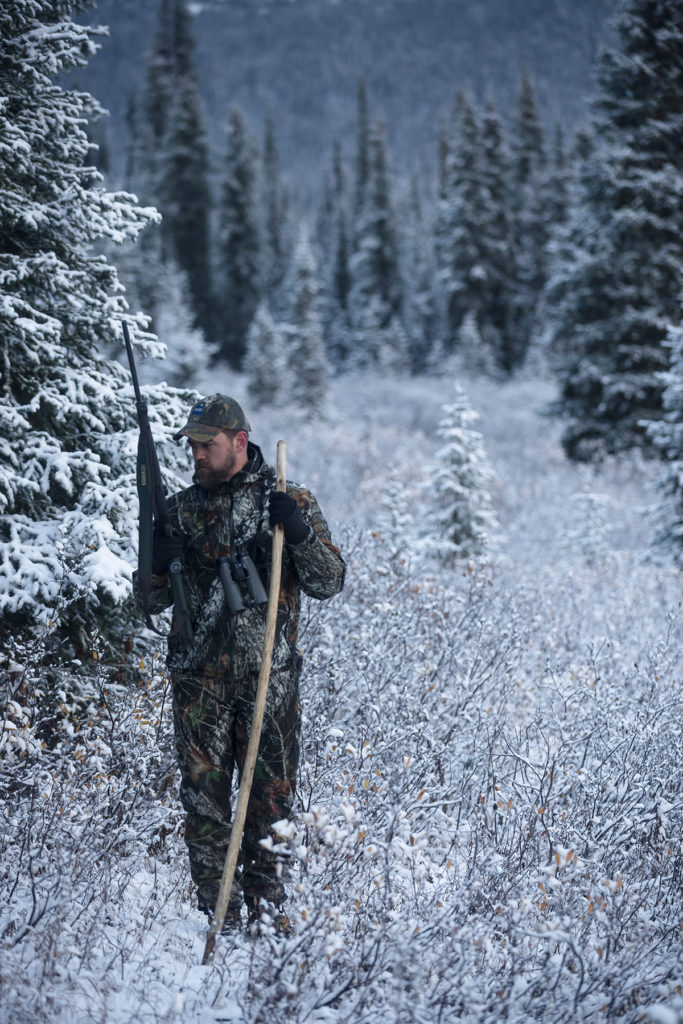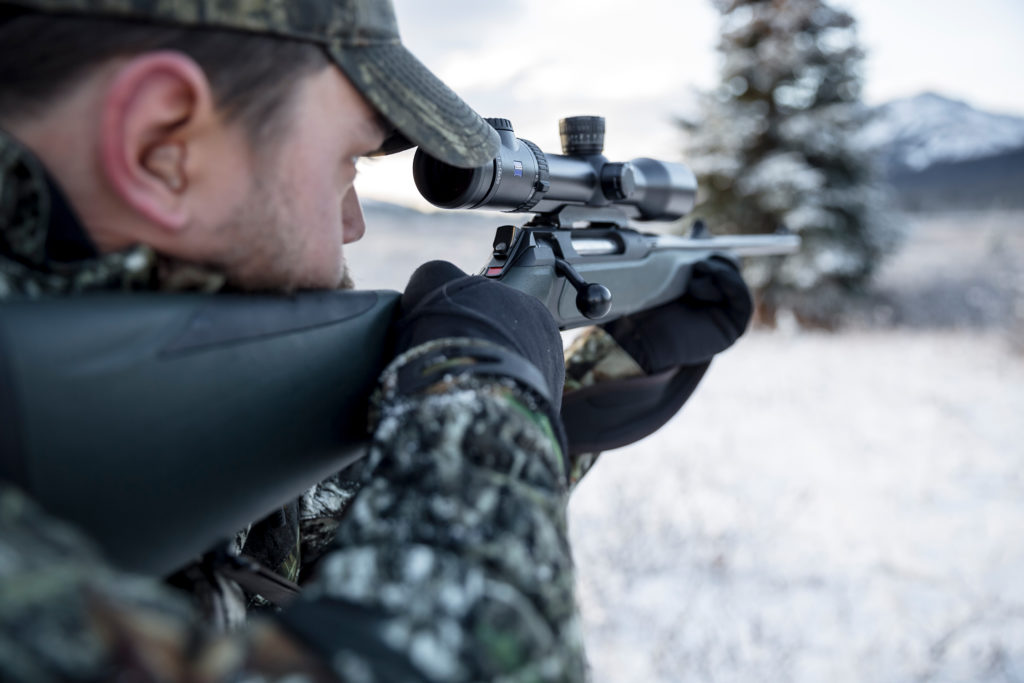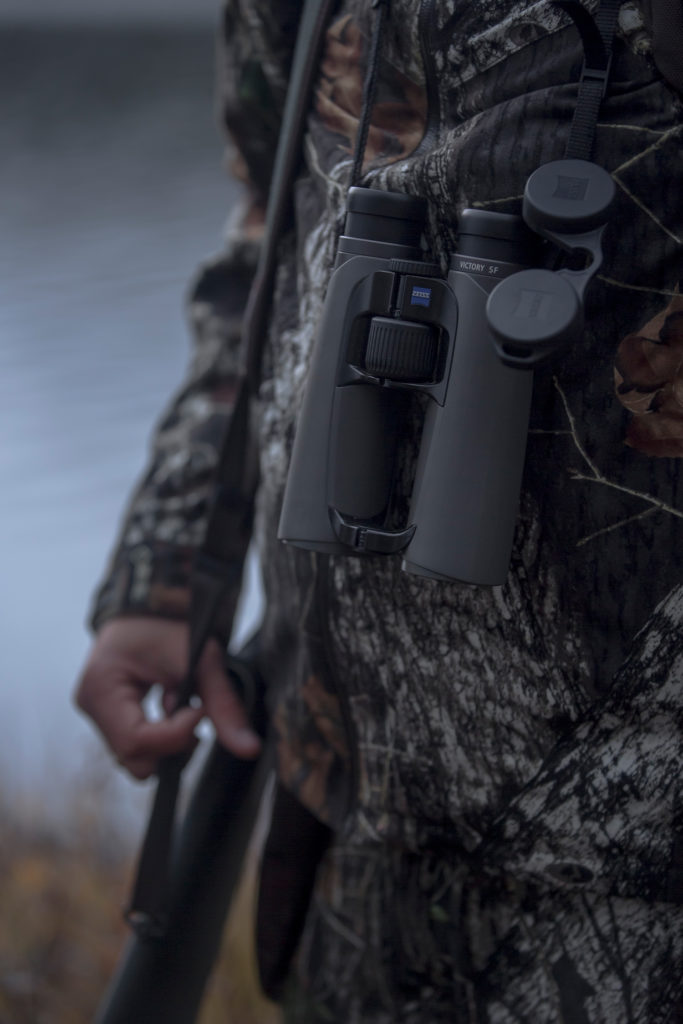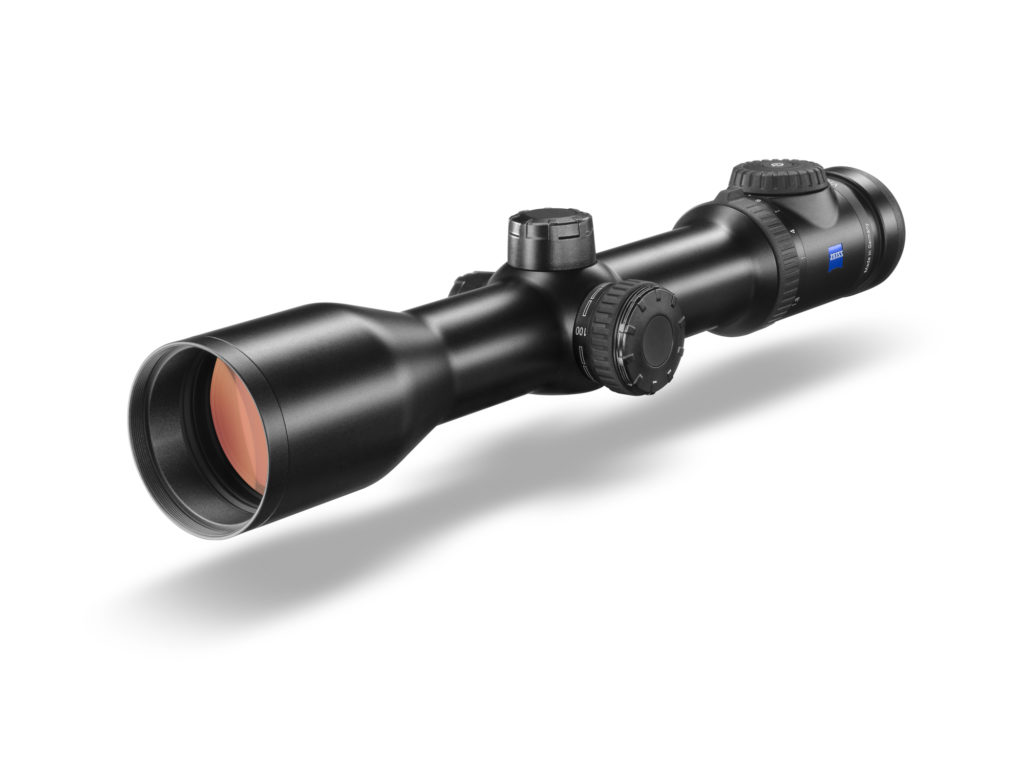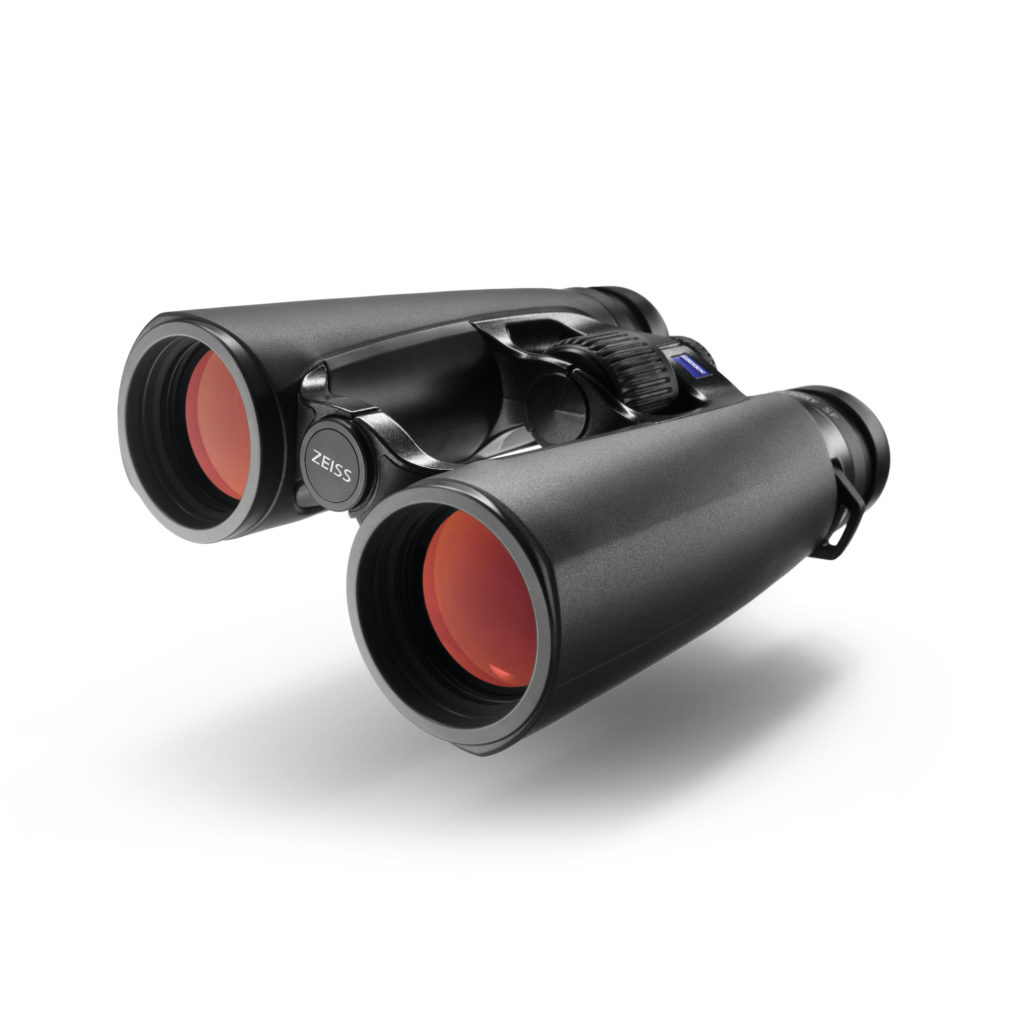When it all comes together
Since its introduction to New Zealand in 1904, the Himalayan goat has fared very well in the rough and mountainous region around Mount Cook, and has now spread to a wide range of mountain tops and valleys of the Southern alps.
Its thick coat makes it impervious to the harsh climate of the mountains, and its ability to scale almost vertical mountain sides means that you will often find them in places, only reachable by helicopter or arduous hikes up the steep mountain sides. This makes the thar a great and challenging specie to hunt.
Knowing this full well, I was almost shocked when I found myself on a mountain side, looking at a beautiful bull thar trough my V8. We had just started out that morning, on what I expected to be a long and hard ordeal, crawling over sharp rocks and loose shale, trying to get into position of the wary thar. But suddenly, like a roebuck walking into the meadow in a far off European forrest, the big bull came up over the ridge towards us.
As he jumped from one rock to the other, it was clear from his limp that he had probably been injured – maybe from fighting other bulls for domination of the heard. I got a closer look at him trough the Victory SF.
After a couple of tough weeks hunting red deer with little succes, here I was, looking at a great thar coming towards us after what had seemed like a quick morning stroll on the mountain. Eager not to loose this opportunity, I had dropped down in a good steady rest on my backpack. And now I was waiting for the broadside shot.
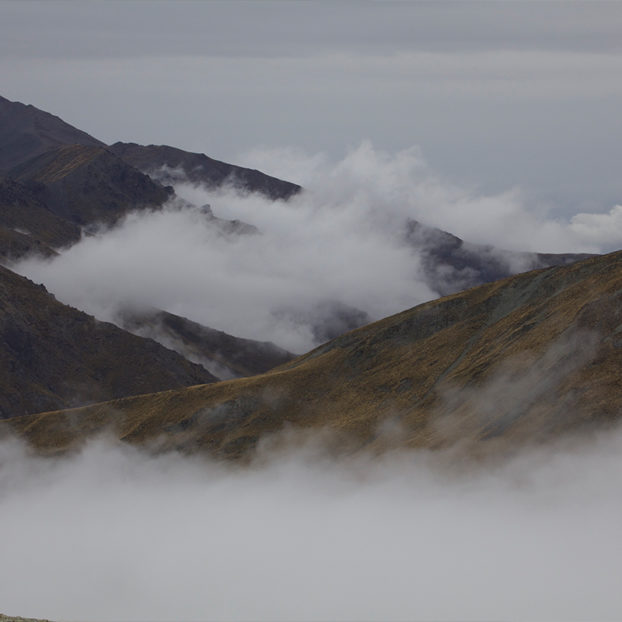
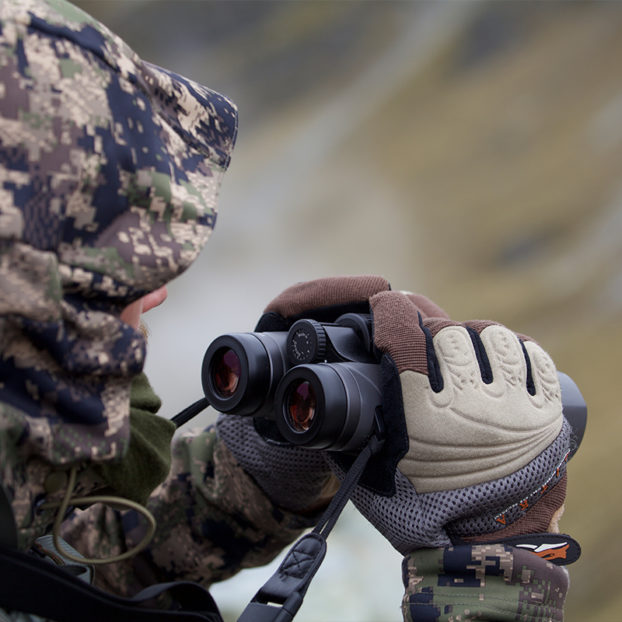
When you get an opportunity like that, there is always the risk that you are being over confident and that something goes wrong in the last second.
DAVID CARSTEN PEDERSEN
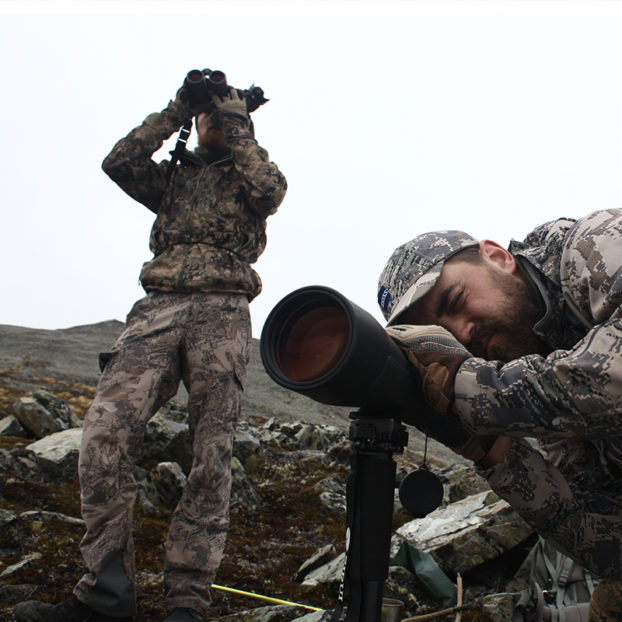
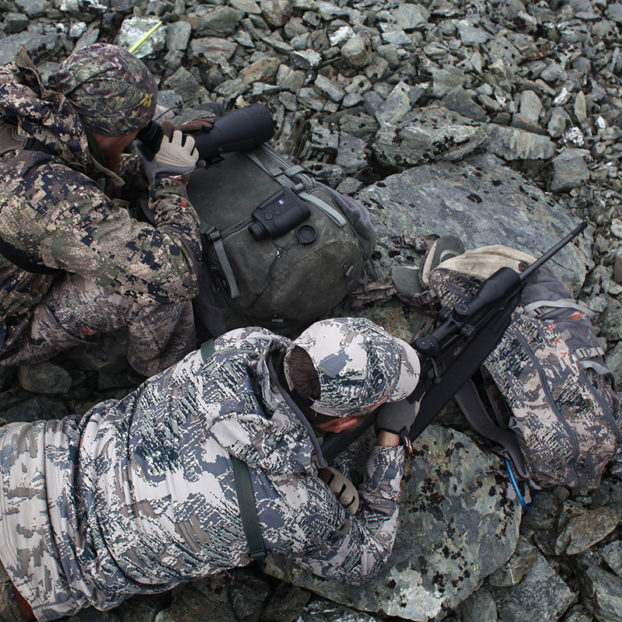
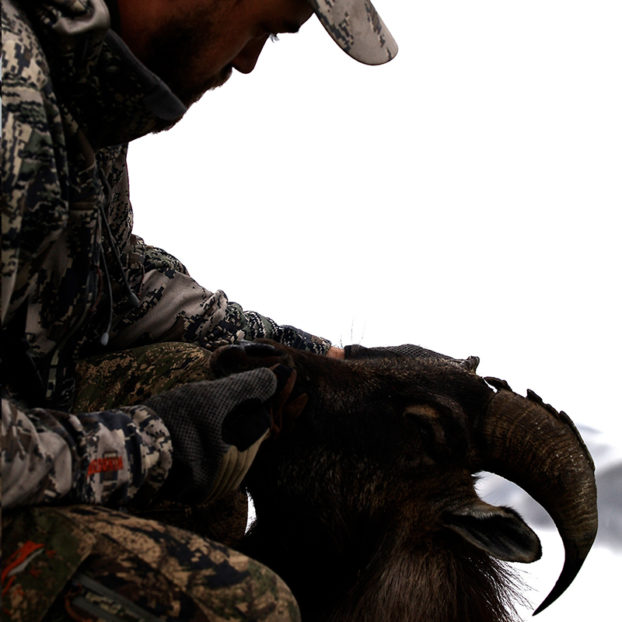
Moving closer, the bull suddenly stopped and turned his head to look straight at us. I dont know if he caught our wind. Or if his many years on the mountain had just taught him to be wary of everything. Knowing the range was good and not willing to wait and see if he would stand or run, I gently squeezed the trigger on the Sauer 404.
The light trigger broke like glas and even with the recoil of the 300 win mag, I could clearly see the shot land right behind the front leg of the big animal. As the bullet hit, he made a great leap forward, sprinting down the mountain side. And then he was gone. It was as if the long hard grass had swallowed him completely. The only thing left to testify what had happened was bullet casing on the ground and the sound of the shot, still echoing trough the valley.
“That was crazy, mate!” It was clear that my hunting buddy Ulrik was as happy as I. He had been hunting thar before and knew full well that what we had just experienced was luckier than we probably deserved. But as we went to look for the thar, we talked about all the parts that had to come together to make this happen. And the more we talked, the more agreed that luck was only a small part of it. We had done our homework and found an excellent guide who had showed us an area with plenty of thar. We had been training for weeks in the mountains and forests of the South Island, getting fit enough to move around in the shale without problems. We had brought gear that was made for the harsh mountains: optics making even the smallest details stand out, a rifle that could reach as far as we would ever need, and camouflage that made us disappear – even to the sharp eyes of the thar. It was this combination of research, preparation and the right gear that had made the hunt seem easy. The lucky part was being at the right place at the right time.
We found the thar less than a hundred meters from where he had disappeared. His beautiful head rested in the grass and his fur smelled of mountains and fog. “Now comes the hard part,” said Ulrik with a big grin. “You shoot him – you carry him” he said, smiling from ear to ear. Sometimes there is only the hard way.
HOW TO HUNT IN NEW ZEALAND
Hunting in New Zealand is a great experience for any hunter with an adventurous heart. As one of the few places in the world, it’s possible for foreign hunters to hunt on public land without a guide. Obtaining a firearms license and a hunting permit is easy and can be applied for online at the department of conservation’s home page, or at a local police station or DOC office. Be advised that hunting on public land can be physically challenging, and if you don’t have the proper experience and preparation, it can also be quite dangerous. Hiring a local guide is an easy and recommendable option for foreign hunters who want to make the best of their time in New Zealand. Spending time with the locals and learning from the vast experience and skills of the Kiwis is often as much a part of the experience as the hunt itself. There is also the option of hunting on large private areas. Here, the physical challenge will often be be less grueling, but the hunt can still present a good challenge for hunters looking for a great experience in New Zealand.
Equipment used
Long-rage shooting
Falconry: The Masters of the Sky
An interview with Sandra Jung, Germany’s youngest self-employed falconer
How did you get involved in falconry?I actually got into falconry by chance. Back when I was 16, a friend took me to a show featuring birds of prey. I was hooked by these fascinating creatures from the moment I got there. For many years, I helped out at the same falconry in my free time.
What does falconry mean to you?These days, falconry has become a cornerstone of my life. It might sound corny, but I live for falconry. My work and my free time are devoted to birds of prey, and I’m completely okay with this. I couldn’t imagine a life without these animals, and I really hope that things continue this way.
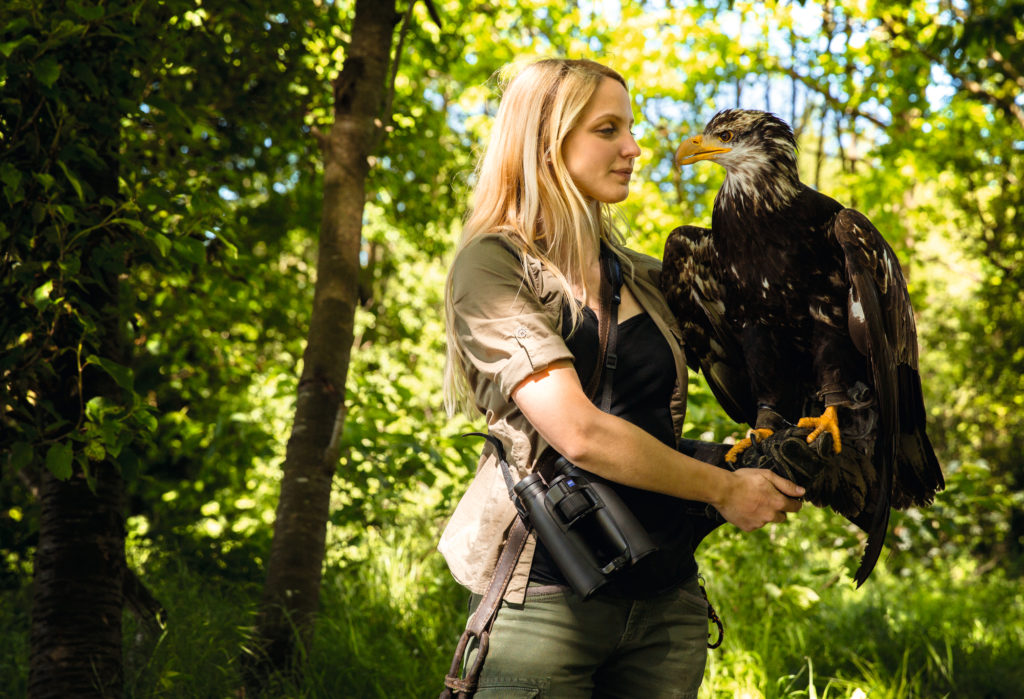
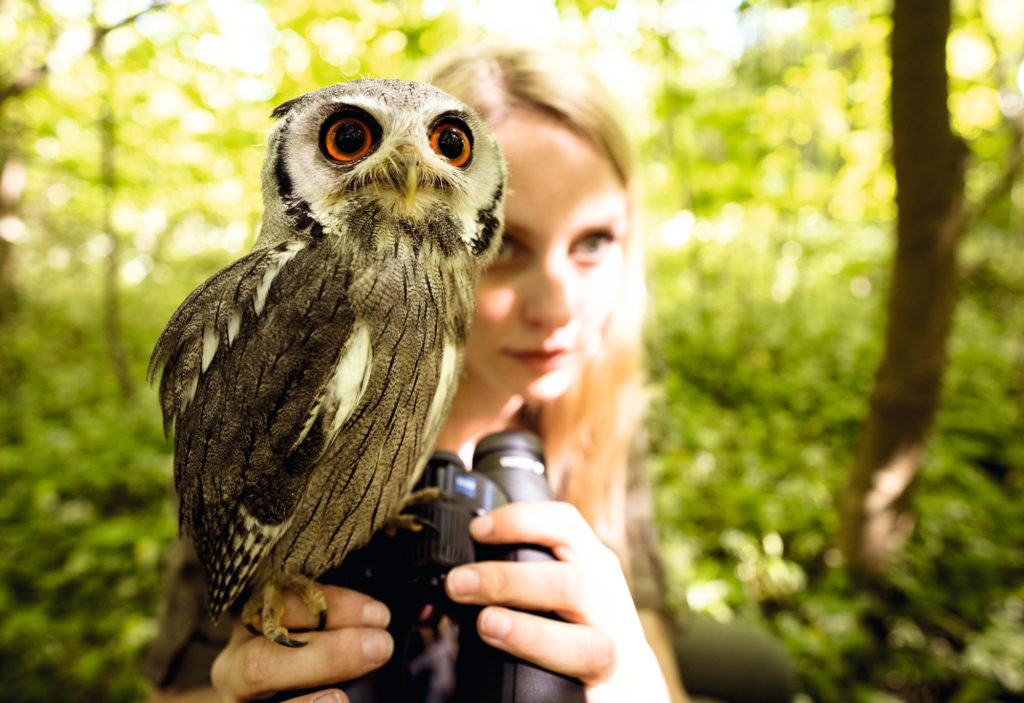
Why did you decide to write a book? The publisher approached me. I myself would never have dreamed that there would be so much interest in my life’s story. When writing, it was important to me to provide a positive and comprehensive image of falconry without getting too bogged down in the details so that the book would appeal to those starting out as falconers as well as people completely unfamiliar with this field. I think my book encourages the reader to follow their dreams and believe in themselves.
What’s the book about? The book follows my journey, starting with my first contact with these wonderful animals and continuing all the way to the falconry I run today. I describe the highs and lows – life almost never leads you down a straight path – and emphasize first and foremost that you should stay true to yourself and always follow your heart.
Is it possible to see you and your birds in person?Of course. The falconry at the magnificent Greifenstein Castle near Saalfeld in eastern Germany is open to the public from April through October.
What connection do you see between hunting and falconry?I hunt with my gun as well as with birds. Hunting is a welcome change to all the hard work during the high season. So in winter, it’s all about relaxing with the golden eagle at the falconry. Then there’s just me and the bird – with no one watching and no expectations. Still, I know how to enjoy the tranquility when stalking game throughout the year, giving me a chance to relax and take a deep breath. Out in the forest or the field, time passes more slowly. These breaks are certainly welcome.
What do you hope to do in the future?Of course, I hope to keep doing this job for many years to come. I also really want all the animals to stay happy and healthy and would like spectators to continue to come visit us at Greifenstein Castle.
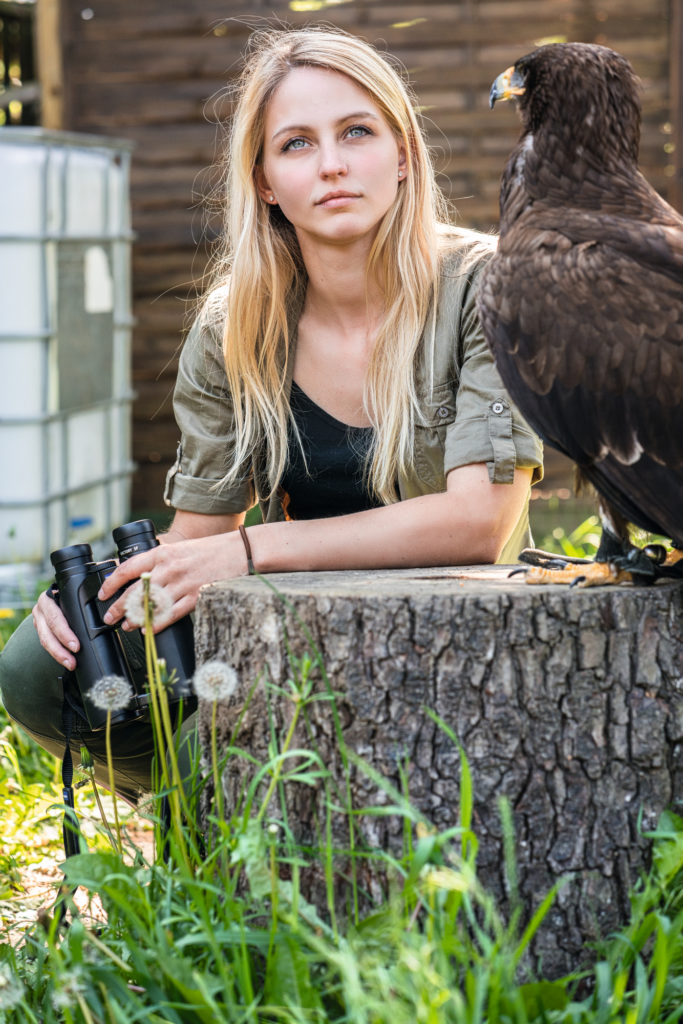
Crow Hawking
The Joy of Falconry
A Unique Relationship between Humans and Animals
For Sandra Jung, falconry and hunting allows her to be as close as possible to nature. Sandra discovered her passion for birds of prey at the age of just 16 when she began working voluntarily at weekends for a falconry centre. Sandra subsequently acquired her hunting qualification and falconry licence in 2011.
Now the business management student runs a small bird of prey operation business between Cologne and Düsseldorf with her boyfriend Benedikt Nyssen. It all began four years ago with the Harris Hawk Dexter, named after TV serial killer Dexter Morgan. As time went on, the Harris Hawk has been joined by a female, Tequila, along with Linus the white-faced owl, Soraya the Saker falcon, Elise the jackal buzzard, Kayla the Andean eagle, Raja the steppe eagle and Milo the American bald eagle.
‘The fascinating thing about falconry is the unique relationship that develops between humans and animals. The bird is a free creature, you can’t force it to do anything and yet it decides to work voluntarily with you’, Sandra Jung commented to us when we were invited to join her on her rounds.
In falconry, I experience how my bird follows her natural instincts, see how she uses intelligence and skill to catch her prey. It is an astonishing natural spectacle!
Sandra Jung
In the forest, she uses Dexter to demonstrate so-called free pursuit. With this type of hunting the buzzard follows the falconer and her hunting dog ‘Balu’, a one-year-old wire-haired Hanover hound, from tree to tree. ‘From his elevated position, he has a far-reaching views and hunts of his own accord’, Sandra tells us passionately: ‘In falconry I experience how my bird follows her natural instincts, watch how she uses intelligence and skill to catch her prey. I think this is an astonishing but natural spectacle! Harris Hawks are the only birds of prey who live and hunt in packs and because of this they are able to build a particularly close connection with humans.
When asked what has been her best experience, Sandra Jung doesn’t need much time to think: ‘Every flight, every hide is unique. You experience the most colourful situations and moments. One thing I’ll never forget is my first piece of game, a little brocket in the magnificent Eifel region, and my first kill with my bird Dexter. He managed to catch a crow after several attempts and I was so proud of him.
Crow Hawking
Roebuck hunting – A May Sinfonia
In May, nature appears at its best.
As in no other month, I am drawn out into the wonderful nature in May. At the same time, I start to get that urge to hunt again. Not a real urge, rather a desire or demand. It’s the anticipation of idyllic evenings and magical mornings in my hunting ground. So on this evening in May, I found myself being drawn out into the fields and meadows of Holstein once again.
The sun was already touching the horizon and signaling the end of the day. There was a south-easterly wind so I chose the “watchtower”, a closed seat not far from the edge of the woods with an area of grass to the front, rapeseed to the right and wheat to the left. Even whilst setting up, I could make out a barren doe at the hedgerow opposite, stretching to reach the fresh buds and new leaves in the shrubbery. I watched it for a while through my new Victory SF. It was a view so clear and bright as if I was stood directly next to her. And whilst I was busy watching this one grazing away, deep in thought, two more stepped out of the nearby woods almost unnoticed.
By the time I noticed them, they had already come closer and were now barely 40 meters away. With my naked eye, I could make out a weak yearling and another equally weak barren doe. Twin fawns from last year, I presumed. The buck was still in velvet; barren doe can be hunted in Schleswig-Holstein from September onwards only. I enjoyed this sight and then let my gaze drift. A pair of ears exposed another female amongst the mass of yellow flowers, confidently looking in my direction.
One last glance through the telescopic sight to check confirmed my suspicions: it was a young roebuck.
Anna Lena Kaufmann
Meanwhile the buck and barren doe had come a bit closer, and now happily grazed at the edge of the rapeseed. Upon closer inspection I noticed that the supposed barren doe actually had a tush. My right hand intuitively went to grab the rifle. One last glance through the telescopic sight to check confirmed my suspicions: it was a young roebuck. Aiming at it I could now clearly recognize the tiny antler stumps. I did not hesitate for long and gave the runt the bullet. On the scales and broken up, he only reached 7 kilos.
Later on, as I conjured up a delightful dish from the roe deer venison, I reviewed the evening again. I was simply grateful. For the nature, its creatures and the hunting experience I had the privilege to enjoy.
Euipment used
A Hunting Adventure in Canada
The Right Preparation goes Hand in Hand with Extensive Training
For ZEISS Pro Hunter David Carsten Pedersen this dream came true when he went to British Columbia, a province located on the west coast of Canada. “I want to go where I’ve never been, see beyond the horizon and learn as much from nature as it’s willing to show.” In a campfire interview the ZEISS athlete reports on his fascinating trip, about the perfect equipment package for an adventure like this and how to turn your hunting trip into an unforgettable, once in a lifetime experience.
In-Depth Preparation and Planning
A hunt like this, in the backcountry of British Columbia, requires in-depth preparation and planning. Before getting started, you have to think strictly about every little aspect of the journey. What goes in your backpack? What is absolutely essential and what may be expendable? You have to think about weight and about necessities. The right equipment is of the greatest importance, because the whole trip stands and falls with it. The clothing, the rifle, the binoculars, the scope – everything needs to work flawlessly and in all weather conditions. Don’t let sunshine, rain, snow or mist determine your success or failure.
Extensive Training
The right preparation goes hand in hand with . The hunter has to train with the rifle, train with the scope and train at any distance imaginable. For David, this is a really important aspect. “Also train on distances that are that far that you think – OK – this is out of my comfort zone. Because once you’re here, and the chance appears, you don’t want any doubt. You want to know: I can make that shot and I’m going to make that shot.”
Enjoy the Beauty of the Mountains
The most important thing on a wilderness hunt is enjoying it. Enjoy the beauty of the mountains, the freshness of the air and the sounds and smells of nature in its wildest form. Even the smallest things can turn your trip into a valuable memory. Just be open-minded and notice the details of your adventure: the frost that sparkles in the sunshine, a bird you’ve never seen before, the silence and purity of nature. Besides all this, don’t expect everything to be easy, because the tough conditions and the challenges of the wilderness will push you to the limits of your capacity. But exactly that will keep you going and make you even more determined. “Your mind grows higher, your thoughts drift and you become part of your surroundings. But you have to keep your focus, train your eyes and your mind to keep sharp and look for that one crucial detail that determines all the rest.”
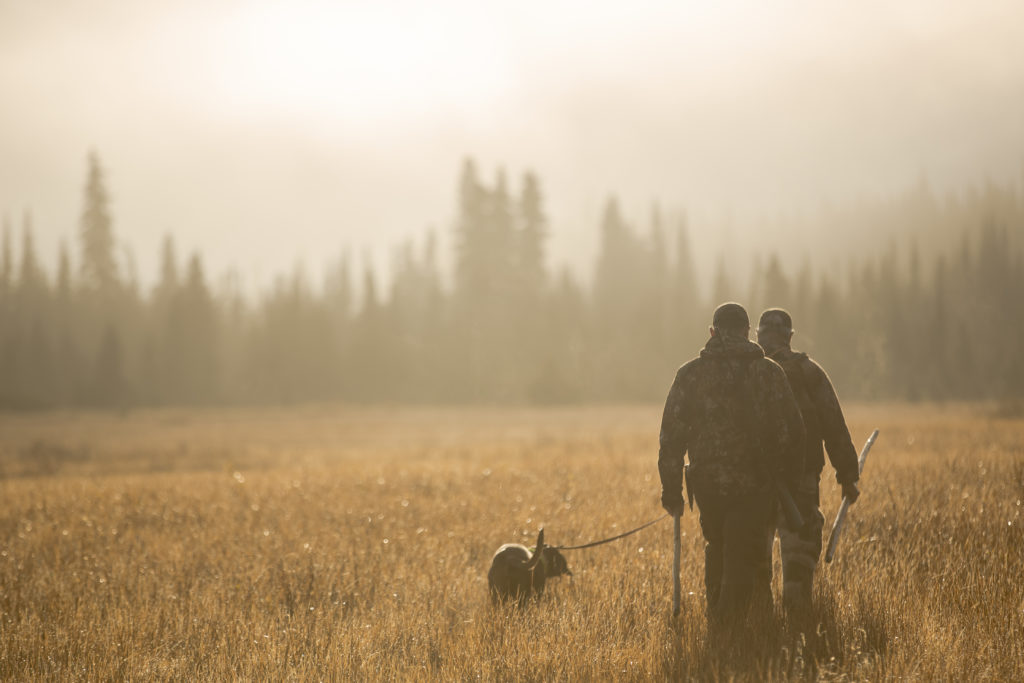
A Wilderness Hunt demands Reliable and Functional Equipment
On his hunting adventure David tested the ZEISS VICTORY SF binoculars and the ZEISS VICTORY V8 1.8-14×50 riflescope. A wilderness hunt demands reliable and functional equipment and the ZEISS premium products fit the hunter’s needs perfectly. “A good pair of binoculars can make the difference between seeing the animal or losing the animal”. On a trip like this, it is important that they are light, fast, easy to use and have a wide field of view. Therefore, the ZEISS VICTORY SF binoculars are absolutely the right choice. They deliver high-contrast, bright images that allow you to see even the finest details in poor light. With a maximum of wearing comfort they are the optimal products for those extra-challenging hunts in tough conditions. David feels totally certain “I can trust them a hundred percent. Even in bad rain and snow, they performed very, very well”.
The Victory V8 is the Ideal Companion in any Situation
The VICTORY V8 1.8-14×50 riflescope also helps David to achieve his goals. Especially the 1.8 magnification enables fast and reliable targeting and quick shots on running game, at short distances as well as at long distances. On a wilderness hunt, the conditions can change in a matter of seconds and you have to be prepared for everything. As a compact all-rounder, the VICTORY V8 is the ideal companion in any situation. No riflescope has ever been this flexible and versatile. The V8 provides an extremely wide range of possible uses and maximum accuracy at any distance. David is obviously impressed: “It’s really amazing to have so many options and so many opportunities in just one package!”
For David Carsten Pedersen, the wilderness hunt in British Columbia was a great adventure and definitely a once in a lifetime experience. “You never know if you’re going to succeed, or maybe you do – because hunting is not about the end, it’s about the moments you experience while you search for other things. It’s about the small things in the big picture and the details in the great story, because in reality, it’s not the goal but the journey that shapes us”.
